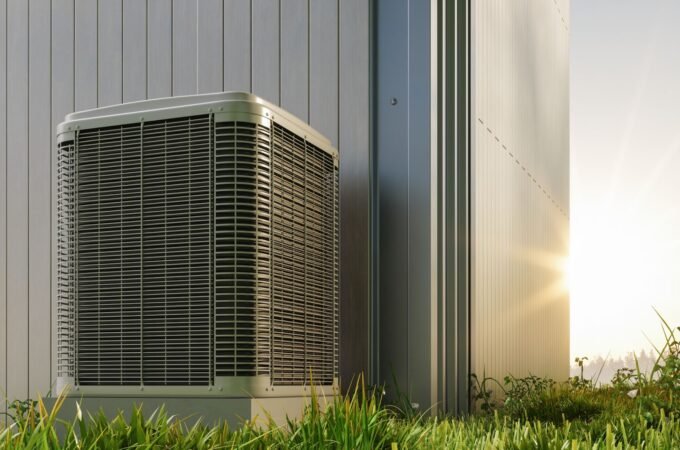
3 Types of Repair Methods for Pier & Beam Foundations
Want to save more while making repairs? Attaining information is the first step, especially when it involves foundation repairs. Pier and beam foundations, a type of crawl space foundation, were commonly used in the 1900s before introducing more modern foundations
A crawl space foundation is characterized by a space between the floor of the building and the ground. This space is wide enough for one to crawl through, and why is it called a crawl space.
The pier and beam foundations also have space under the home for easier access to plumbing and electrical systems. This is one efficient way to tell if your foundation type is a pier and beam foundation.
Having a common knowledge of your home’s foundation and possible foundation repair methods is very important, so first, let’s figure out the problems that affect the pier and beam foundations. For further insight, please visit website to learn more.
Problems Affecting Pier & Beam Foundations
Pier and beam foundations are a multi-layered structure, and to make this easy read let’s start from the ground up on the problems this foundation type can be plagued with.
This type of crawl space foundation’s main problems are moisture, settlement, and flaws that could arise from the original construction methods and materials. These problems include;

Moisture and Poor Ventilation Underneath the Home
A pier and beam foundation home is vulnerable to moisture if the drainage and ventilation aren’t properly constructed. This would affect the home’s structure from excessive moisture to the wood and metal materials, causing the foundation to rot and disintegrate. The affected material has negative compound effects on the rest of the building.
Foundation Settlement Caused by Expansive Clay Soils
Expansive clay soils affect all foundation types, and the pier and beam foundations are no exception. Clay soil expands when wet and contracts when dry.
The forces involved in this expansion are very powerful and can push the foundation’s structure; if this push continues, it could lead to serious foundation problems.
As the structure continues to push up from season to season, the soil will begin to sink and shrink; the constant movement will then cause damages to the interior of the home and cause cracks in the walls and on the floor and door misalignments.
Spongy or Bouncy Floors
Spongy or bouncy floors are a problem known to only pier and beam foundations. This foundation type is known for its floor joists built too far apart to support the weight of the building. But these floor joists, when broken or worn out from extended use, become bouncy, wavy, or spongy.
Piers and beams can suffer breaks and will, of course, need replacements. Piers could rotate and settle differently from how the pier next to it was placed and lead to cracks or breaks, and sometimes the piers might not be sufficient, or the space added might be too close to support the weight of the building’s structure.
3 Types of Foundation Repairs Methods for Pier and Beam Foundations
Just as problems can arise from using these foundation types, there are foundation repair methods that are most suitable for each of these problems and any other problem that might arise and of those that were not mentioned. Here are 3 types of foundation repairs methods for pier and beam foundations;
1. Re-shimming
Shims are small pieces of wood wedged and pounded between the piers’ loosened spaces and wooden beams. Re-shimming involves the frequent adjustments made to the snugness of the pier and beam foundation. These adjustments tighten the looseness or small amount of movement that could affect the pier’s structure.
The process of re-shimming is more of a preventive maintenance method than a foundation repair method. It is only permitted when the building is kept in good working order, and all support materials are placed properly.
All re-shimming should be done every 3 to 5 years, and if consistently done, your pier and beam foundation will be in its best shape and will last for longer.
With an average of $1500 (more or less), you can have your pier and beam foundation re-shimmed. This project might take about a day or less to be completed.
2. Replacing the Wood Used
Maybe the wooden sills used to make the beam are worn out, broken or warped, or the floor joist rotted and worn out; this means that the foundation needs repair and the solution is replacing the affected wood.

Rotting shaker sills and floor joists can result from poor water drainage, and replacing the affected materials depends on how many of them need replacing and if there’s easy access to the center of the problem.
The process of replacing wood is very tricky as the wood used in pier and beam foundations are interconnected, and removing any section without proper knowledge and positioning could lead to the entire house collapsing.
Replacing any worn-out or rotted material is very expensive because of the manual labor involved in the project. With an average of $15,000 and a week or more, the project will be completed.
3. Underpinning the Beam
The interior support areas of a pier and beam foundation suffer more by settlement. They are the most vulnerable areas and often under-supported, which means they will be under-built. Just as the interior support area is affected, the settlement and weight distribution will also suffer.
When the perimeter beams have to be brought to their original elevation, concrete pilings or drilled bell-bottom piers support settled areas.
Only Hire Professionals for Pier and Beam Foundation Repair!
Whatever the foundation problem, only hire professionals who are not just familiar with common foundation repair methods but are trained for whatever situation. This is your best bet to save your home and more money when you spend on the right people to get the job done.




